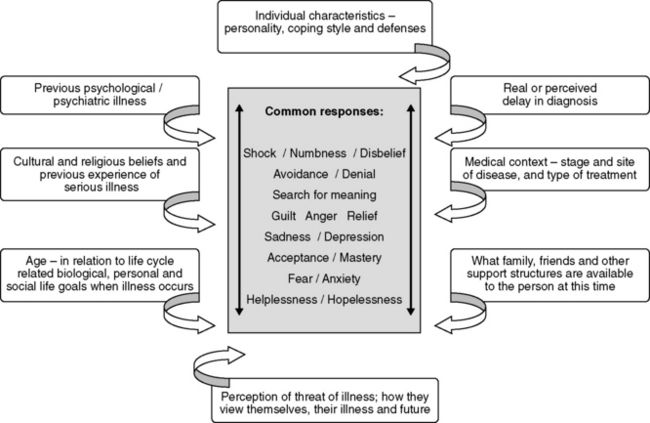9]. In addition, there are also the practical implications of illness, and a patient and their family may have difficulties in terms of their financial and employment status, as well as disruption caused by changes in their role and the family dynamics.
For the patient coming to terms with a cancer diagnosis, it has become helpful to think of their emotional adjustment as a series of different emotional stages. Barraclough [
Although this is a useful guide to apply to many situations associated with ‘loss’ of any kind, it is important to caution against using it as a simple sequential model of what every patient (and their carers) will experience. Although many will react with some of the above emotions, we should not expect all to be initially shocked by a diagnosis and then work through all the stages to a final acceptance. Often there are more individual emotions and they may not occur in any clear order, or may overlap or may be gone through more than once, particularly in an illness that has remissions and relapses or a series of progressive deteriorations. Heightened anxiety and intensity of these emotions will occur most strongly at diagnosis, during treatment episodes and at times of recurrence and in terminal phase.
A summary of some of the common responses and influencing factors is illustrated in
Stay updated, free articles. Join our Telegram channel

Full access? Get Clinical Tree





